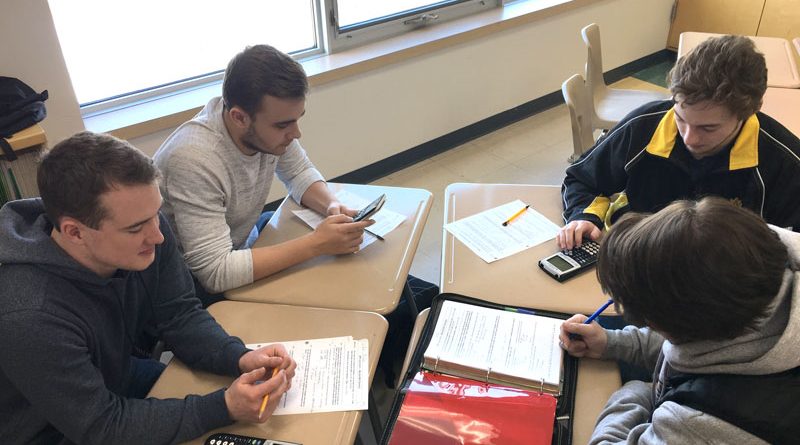Math is fun? You bet your asymptote it is!
By Braiden Janes Strathmore High School


Photo Courtesy Cheryl Davidson
When I started my high school career with SHS I was skeptical that any teacher could teach me anything new. But to my surprise, I found math classes at the school that encouraged learning to the depth of understanding that I was searching for and it was done in an enjoyable and interesting way that I had never experienced. I soon realized the teachers at SHS encourage their students to learn the fundamentals of math in a meaningful way, expecting them to understand the concepts of the math, rather than just memorizing and repeating certain rules and formulas.
At SHS, instruction practices and classroom structure has been continuously evolving over the years, consistently focused on the goal of helping all students to be successful in their studies. Doran Davidson, math curriculum leader at SHS, works closely with other teachers in the math department to implement ideas from various seminars and teaching conventions attended in order to enhance the learning opportunities of every student. Here is a list of some things the teachers do at SHS to help students succeed in math:
– Every day all students are given a half hour block, called Learning Strategies, in which they can meet one-on-one with their teachers or peers to review concepts and improve their understanding on any topic they are learning.
– Before writing large summative assessments such as unit exams, students write formative assessments and are given a list of curricular outcomes, or checklists, that they can use to pinpoint what each question on the quiz was assessing, so they can then properly identify and focus their future studies on the specific concepts they are struggling with.
– Teachers and school counsellors work hard to ensure students enroll in the right math course. A Math 10C Prep course was created as a way to help students who either struggled with the topics of Math 9 at Jr. High or who may not yet be fully confident in their mathematical abilities. There is also the Math 20-1/30-1, Math 20-2/30-2, Math 20-3/30-3 and Math 20-4 streams that students can choose from in Grades 11 and 12.
– Teachers use technology. Quick Key is a multiple-choice marking program that provides teachers valuable data about student learning that is then interpreted and used to improve classroom instruction. Many classes use ActivExpressions, a voting device that allows all students to anonymously participate in classroom discussions without worrying about providing incorrect answers.
– Collaboration with peers is strongly encouraged, both within and outside the classroom. Rather than sit in isolated rows, desks are often arranged in groups to encourage students to talk about math every class. Some students have even formed group math chats on social media and get together outside of class time to work collaboratively.
– The days of the “stand-and-deliver” lecture style of teaching is long gone. Math teachers at SHS strive to make the daily classroom experience engaging and interactive where students are consistently comparing strategies and working together to solve problems. Students are encouraged to focus not only on the “what” and “how” of mathematics, but most importantly the “why.”
To be successful in math, Mr. Davidson has some advice.
“Learning math is no different than any other skill that can be developed in life,” he said. “It takes practice, dedication and a willingness to try, try again until you succeed. And just like the feeling you get from hitting that winning shot in basketball or performing a flawless guitar solo, learning math can be just as exhilarating.”
